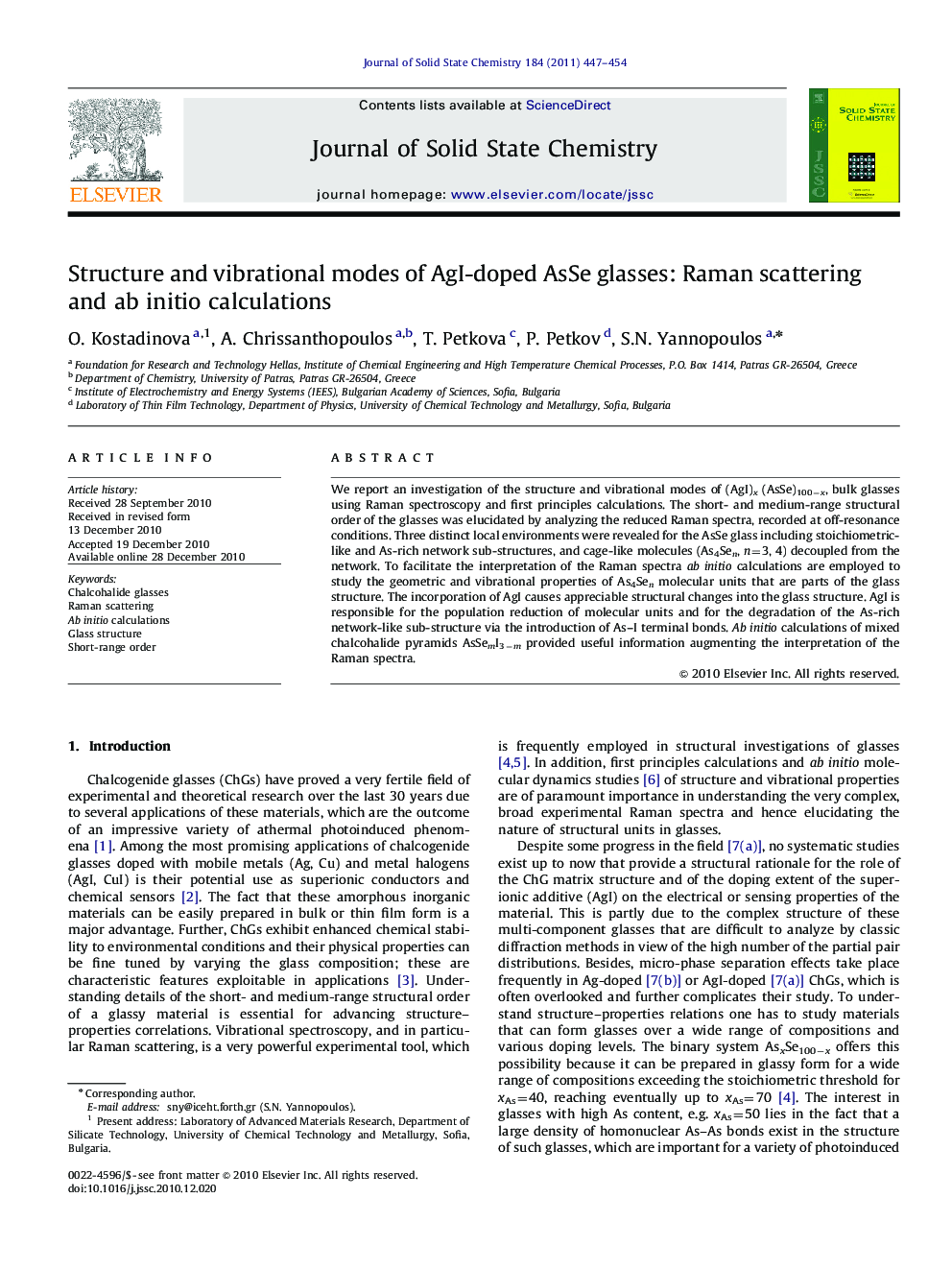| Article ID | Journal | Published Year | Pages | File Type |
|---|---|---|---|---|
| 1331023 | Journal of Solid State Chemistry | 2011 | 8 Pages |
We report an investigation of the structure and vibrational modes of (AgI)x (AsSe)100−x, bulk glasses using Raman spectroscopy and first principles calculations. The short- and medium-range structural order of the glasses was elucidated by analyzing the reduced Raman spectra, recorded at off-resonance conditions. Three distinct local environments were revealed for the AsSe glass including stoichiometric-like and As-rich network sub-structures, and cage-like molecules (As4Sen, n=3, 4) decoupled from the network. To facilitate the interpretation of the Raman spectra ab initio calculations are employed to study the geometric and vibrational properties of As4Sen molecular units that are parts of the glass structure. The incorporation of AgI causes appreciable structural changes into the glass structure. AgI is responsible for the population reduction of molecular units and for the degradation of the As-rich network-like sub-structure via the introduction of As–I terminal bonds. Ab initio calculations of mixed chalcohalide pyramids AsSemI3−m provided useful information augmenting the interpretation of the Raman spectra.
Graphical abstractRaman scattering and ab initio calculations are employed to study the structure of AgI–AsSe superionic glasses. The role of mixed chalcohalide pyramidal units as illustrated in the figure is elucidated.Figure optionsDownload full-size imageDownload as PowerPoint slideResearch highlights► Doping binary As–Se glasses with AgI cause dramatic changes in glass structure. ► Raman scattering and ab initio calculations determine changes in short- and medium-range order. ► Three local environments exist in AsSe glass including a network sub-structure and cage-like molecules. ► Mixed chalcohalide pyramids AsSemI3−m dominate the AgI-doped glass structure.
